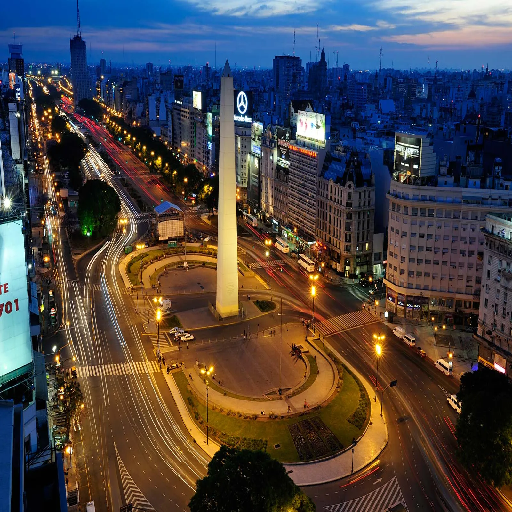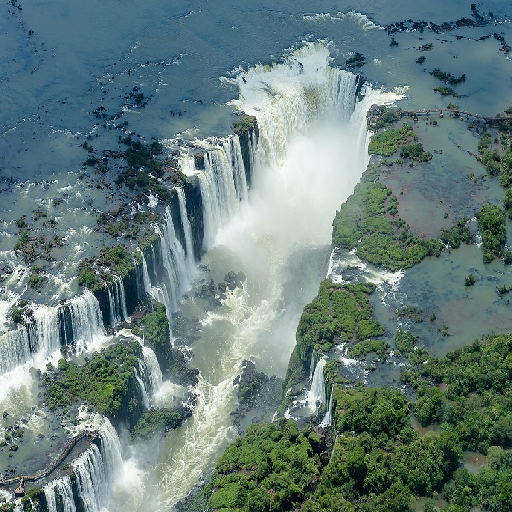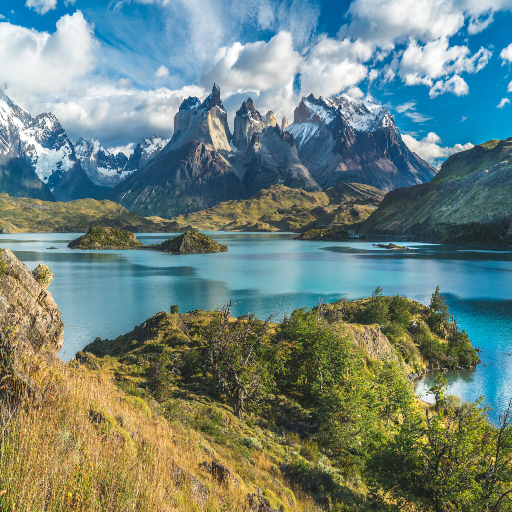As healthcare has evolved globally, Argentina has emerged as one of the most trusted destinations for advanced cardiac care. With its world-class facilities, skilled specialists, and compassionate approach, Argentina offers a unique experience for patients seeking high-quality yet affordable heart treatments. Here, we'll walk you through the remarkable cardiac services available in Argentina and show you why it could be the ideal destination for your healthcare needs.
When it comes to cardiac care, Argentina has become a leading destination for patients seeking world-class treatment, compassionate care, and affordability. Known for its high standards in healthcare and home to some of the world’s top cardiologists, Argentina provides an ideal blend of quality and cost-effectiveness. From advanced medical technology to patient-centered service, the country’s hospitals are designed to support you in every step of your journey to better heart health.
But there’s more to Argentina than just excellent healthcare. With its welcoming culture, vibrant cities, and stunning natural landscapes, your visit here promises to be a comforting and enriching experience. Argentina’s hospitals are dedicated not only to delivering the best cardiac care but also to ensuring a smooth and reassuring experience for international patients. Whether you need a routine procedure or a complex heart surgery, you can trust that you’ll be in skilled, caring hands every step of the way.
Why Choose Argentina for Cardiac Care?

World-Class Medical Facilities: Argentina is home to a variety of hospitals and clinics that meet international healthcare standards. Many facilities are accredited by organizations such as the Joint Commission International (JCI), ensuring that patients receive care in a safe and high-quality environment.
Experienced Specialists: The country’s cardiologists and cardiac surgeons are among the best in the field. Many have trained in prestigious institutions around the world and are well-versed in the latest techniques and technologies. This expertise translates into better outcomes and a higher standard of care for patients.
Affordable Healthcare: One of the most compelling reasons to consider Argentina for cardiac care is the cost. Procedures in Argentina can be significantly less expensive than in the United States or Europe, often by as much as 50-70%, without compromising quality. This affordability extends to consultations, surgeries, and post-operative care, making it accessible for many patients.
Comprehensive Care: Hospitals in Argentina typically adopt a multidisciplinary approach to cardiac health, integrating cardiology, nutrition, rehabilitation, and psychological support. This holistic model ensures that patients receive comprehensive care tailored to their individual needs, promoting better recovery and long-term health.
Reasons to Choose Argentina for Cardiac Treatment
Argentina is a beautiful country with much to offer patients and their families. Whether you’re exploring Buenos Aires’ charming neighborhoods, marveling at Iguazu Falls, or relaxing in Mendoza’s vineyards, Argentina offers a chance to unwind and experience new things.

World-Class Medical Facilities
Argentina’s hospitals and cardiac centers are equipped with the latest technology, comparable to Europes.

Expert Cardiac Specialists
Argentina’s cardiologists and cardiac surgeons are among the most experienced globally, internationally trained .

Affordable Treatments
Cardiac care in Argentina is significantly more affordable without compromising on quality.

Travel-Friendly Policies
Argentina offers medical visas prioritized for patients, along with dedicated international services in hospitals.
Top 20 Cardiac Hospitals in Argentina
| S.No. | Name | City | Country | Website | Phone | |
|---|---|---|---|---|---|---|
| 1 | Sanatorio Güemes | Buenos Aires | Argentina | www.sanatorioguemessalud.com | +54 11-5921-0000 | info@sanatorioguemessalud.com |
| 2 | Hospital San Bernardo | Buenos Aires | Argentina | www.hospitalsanbernardo.com | +54 11-5921-0000 | info@hospitalsanbernardo.com |
| 3 | Hospital Dr. José Marada Cullen | Buenos Aires | Argentina | www.hospitaljosemaradacullen.com | +54 11-5921-0000 | info@hospitaljosemaradacullen.com |
| 4 | Hospital Interzonal Gral. de Agudos Dr. Prof. Rodolfo R. | Buenos Aires | Argentina | www.hospitalinterzonal.com | +54 11-5921-0000 | info@hospitalinterzonal.com |
| 5 | Hospital Juan D. Perón | Buenos Aires | Argentina | www.hospitaljuanperon.com | +54 11-5921-0000 | info@hospitaljuanperon.com |
| 6 | Hospital Dr. Marcial V. Quiroga | Buenos Aires | Argentina | www.hospitalmarcialquirogasalud.com | +54 11-5921-0000 | info@hospitalmarcialquirogasalud.com |
| 7 | Hospital Pte. Juan Domingo Perón de Tartagal | Tartagal | Argentina | www.hospitaljuanperon.com | +54 11-5921-0000 | info@hospitaljuanperon.com |
| 8 | Hospital Provincial | Buenos Aires | Argentina | www.hospitalprovincial.com | +54 11-5921-0000 | info@hospitalprovincial.com |
| 9 | Hospital Regional San Martín | San Martín | Argentina | www.hospitalregionalsanmartin.com | +54 11-5921-0000 | info@hospitalregionalsanmartin.com |
| 10 | Hospital Regional Enrique Vera Barros – Capital | Buenos Aires | Argentina | www.hospitalenriqueverabarros.com | +54 11-5921-0000 | info@hospitalenriqueverabarros.com |
| 11 | Maternidad Privada Salta | Salta | Argentina | www.maternidadprivadasalta.com | +54 11-5921-0000 | info@maternidadprivadasalta.com |
| 12 | Hospital Humberto J. Notti – Guaymallén | Guaymallén | Argentina | www.hospitalhumbertojnotti.com | +54 11-5921-0000 | info@hospitalhumbertojnotti.com |
| 13 | Hospital de Niños Dr. Orlando Alassia | Buenos Aires | Argentina | www.hospitalorlandoalassia.com | +54 11-5921-0000 | info@hospitalorlandoalassia.com |
| 14 | Sanatorio Integral Luz Médica S.A. | Buenos Aires | Argentina | www.sanatoriointegral.com | +54 11-5921-0000 | info@sanatoriointegral.com |
| 15 | Instituto Médico Río Cuarto | Río Cuarto | Argentina | www.institutomédicoríocuarto.com | +54 11-5921-0000 | info@institutomédicoríocuarto.com |
| 16 | Clínica Inst. Rawson de Diagnóstico y Tratamiento S.R.L. | Buenos Aires | Argentina | www.clínicainstrawson.com | +54 11-5921-0000 | info@clínicainstrawson.com |
| 17 | Sanatorio Alende Cerro | Buenos Aires | Argentina | www.sanatorioalendecerro.com | +54 11-5921-0000 | info@sanatorioalendecerro.com |
| 18 | ICBA Instituto Cardiovascular de Buenos Aires | Buenos Aires | Argentina | www.icba.com | +54 11-5921-0000 | info@icba.com |
| 19 | Fundación Médica de R. Negro y Neuquén y Clínica Radiológica del Sur | Río Negro | Argentina | www.fundacionmedica.com | +54 11-5921-0000 | info@fundacionmedica.com |
| 20 | Hospital San Carlos | Buenos Aires | Argentina | www.hospitalsancarlos.com | +54 11-5921-0000 | info@hospitalsancarlos.com |
Your Journey to Cardiac Health in Argentina
Planning a medical trip can feel overwhelming, but Argentina’s hospitals have tailored their processes to make it as smooth and reassuring as possible. Here’s what to expect:
Preparing for Your Visit: Before you arrive, it’s recommended to consult with your chosen hospital. Many hospitals offer online consultations where you can discuss your medical history, symptoms, and required procedures. Once your treatment plan is set, their international patient office will guide you through logistics, from securing a medical visa to planning your stay.
Arriving in Argentina: Major airports like Ezeiza International Airport in Buenos Aires have convenient transportation options to hospitals and nearby hotels. Many hospitals provide airport pickup services, ensuring a seamless experience from the moment you land.
Consultation and Diagnosis: Upon arrival, a thorough consultation will be conducted, often including necessary diagnostic tests. Your medical team will review your condition in detail, explain your options, and help you make informed decisions about your care.
The Treatment Process: Depending on your diagnosis, your medical journey could range from a single treatment session to a multi-step procedure. Your cardiac care team will provide detailed information about each step, ensuring you feel confident and informed.
Recovery and Aftercare: Following your treatment, the hospital team will guide you through rehabilitation options. Physical therapists, nutritionists, and mental health professionals are available to support your recovery, both in Argentina and, if needed, through remote consultations after you return home.
Estimated Costs of Cardiac Treatment in Argentina
| Treatment | Estimated Cost (USD) |
|---|---|
| Coronary Artery Bypass Grafting (CABG) | $8,000 – $15,000 |
| Heart Valve Surgery | $7,000 – $13,000 |
| Angioplasty and Stent Placement | $3,500 – $7,000 |
| Compared to the U.S. or Europe, these costs are 50-70% lower, allowing you to access quality care while saving on expenses. | |
Hear from Our Patients

“My experience with cardiac surgery in Buenos Aires was transformative. Not only was the procedure a success, but the hospital staff went above and beyond to help me recover in comfort. I can’t recommend Argentina enough.”

“Choosing Argentina for my heart surgery was one of the best decisions I've made. The level of care, kindness, and expertise was outstanding. From the doctors to the nurses, everyone made me feel at home, even though I was miles away from it.”
Explore Argentina During Your Stay
Argentina is a beautiful country with much to offer patients and their families. Whether you’re exploring Buenos Aires’ charming neighborhoods, marveling at Iguazu Falls, or relaxing in Mendoza’s vineyards, Argentina offers a chance to unwind and experience new things.

Buenos Aires
Explore the historic neighborhoods, tango culture, and delicious cuisine.

Iguazu Falls
A natural wonder and one of the most breathtaking sights in South America.

Patagonia
Known for its stunning landscapes, perfect for a quiet recovery and scenic adventures.
Begin Your Journey to Health in Argentina
If you’re ready to explore your cardiac treatment options in Argentina, we’re here to help every step of the way. From personalized treatment plans to travel guidance, we’ll ensure that you feel supported and informed. Reach out today to start your path to health and healing.

